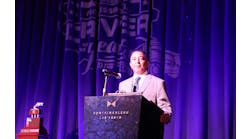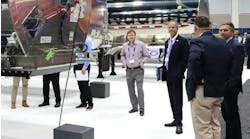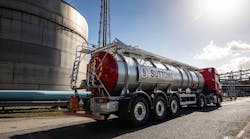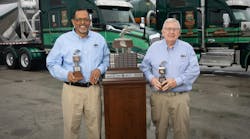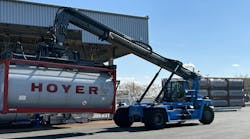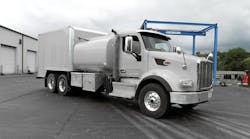New corporate ownership and a radical change in the type of stainless steel used for chemical tankers were just a couple of the developments headlining the 2007 Brenner Tank Expo. This was the sixth year for the event, which took place earlier this year in Fond du Lac, Wisconsin.
Bruce Yakley, president and chief operating officer of Brenner Tank LLC, opened the conference with the announcement that the cargo tank builder had been acquired by Insight Equity, an investment holding company based in Southlake, Texas.
Yakley went on to explain that Brenner will continue to operate under its own name but will be a part of Walker Group Holdings LLC, which includes Walker Stainless Equipment Co LLC, Progress Tank, and Garsite/Progress LLC. “We believe we will have opportunities to realize many synergies with the other companies in the group,” he said.
Discussions of the benefits of Lean Duplex stainless steel continued throughout the conference. Yakley said that cost played a big role in the Brenner decision to use Lean Duplex stainless in chemical cargo tanks.
“Back in 2003, DOT407 trailers were selling for approximately $40,000,” he said. “The price has now climbed to around $80,000, and it's all due to the rising price of stainless steel. Nickel accounts for 10% of the cost of 304 and 316 stainless steel, and prices for the mineral range from $15 to $20 a pound. Prices for molybdenum, another component in steel, increased 400% during 2003 to 2006.
“It became clear that we needed alternatives to the traditional stainless steels used in cargo tanks. We needed something that would give us more price stability and would reduce the cost impact on our customers.”
Lean Duplex
What the Brenner team came up with was a low alloyed grade of stainless steel called Lean Duplex (LDX) 2101. The specific product they selected comes from the Outocumpu mills in Finland.
Ralph Davidson, a consultant with Outocumpu, said that LDX 2101 was developed as a second-generation duplex stainless steel in the 1980s. Metallurgists at Outocumpu increased the nitrogen content and took out as much nickel as they could.
“By doing so, they came up with a duplex stainless steel that is very strong, has excellent toughness, and offers good weldability,” he said. “A higher yield strength means we can use less of the Lean Duplex when we're fabricating a cargo tank. We believe this will be a great alternative to 316L stainless steel. In Europe, it's being used for storage tanks, and it is performing very well.”
LDX 2101 was developed with low addition of nickel in order to reduce and stabilize the cost. The low nickel content is compensated by an increased amount of manganese and nitrogen to assure a balanced microstructure with approximately equal amounts of ferrite and austenite. Ferrite is defined as basically iron with magnetic qualities and a body centered cubic structure. Austenite is a metallic solid solution of iron and an alloying element.
Combining the ferrite and austenite grains structures helps to give the LDX 2101 a number of qualities that make it superior to 316L stainless steel. The Lean Duplex 2101 has a yield strength more than twice that of 316 and 304 stainless steels, and the yield strength continues even at high temperatures. Lean Duplex also is highly resistant to stress corrosion cracking and has better pitting resistance. Lean Duplex is less susceptible to thermal shock, and it performs better in high-temperature environments.
Limiting factors
Lean Duplex comes with plenty of advantages, but there are a few drawbacks. Steve Suess, president of Stork Technimet Inc, said that Lean Duplex has chemical product compatibility that is similar to 316L, but not in every application.
“Lean Duplex definitely performs best with chlorides,” he said. “However, tank owners will have to perform corrosion tests before transporting acids in Lean Duplex tanks. Some acids do well with this type of stainless steel, others don't.”
Yakley pointed out that the Lean Duplex has a slightly different appearance. It is a darker shade of gray. Brenner does order the material with a 2B finish, which works well for chemicals. Initially, Lean Duplex tanks will have fittings made of 316 stainless steel.
Brenner is building the Lean Duplex tanks under Department of Transportation Special Permit 14467. A copy of the exemption document must be carried with the tank. Deliveries of Lean Duplex trailers will start in January 2008.
In other activities during the Brenner Tank Expo, participants had an opportunity to observe a head reversal demonstration and see the company's newest robotic welding equipment. Brenner staged the head reversal to show just how little pressure was needed to cause the event.
